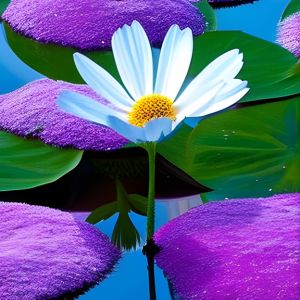Significance Of Water In The Yaga-Vedi
You will be surprised, a simple act of bringing water into the yaga-vedi and the connected procedures, what all they signify! Listen to the above audio.
Significance Of Water In The Yaga-Vedi
On the day of the Ishti, the yaga performed in connection with Purnima and Amavasya, the first thing that is done is to bring water into the yaga-vedi.
It's really interesting.
The associated mantras when chanted with proper understanding, you should see what all thoughts they create in the mind of the performers of the yaga.
This is how even ordinary acts such as bringing water assume a lot of significance when done in connection with yajna.
The procedure
This procedure is called अपां प्रणयनम् ( apam pranayanam ).
Mantra says यज्ञो वा आपः - water is yajna.
What is yajna done for?
For creating something that is non-existent.
We know liquid or water is the base raw material for the creation of the world. That's why we see Mahavishnu lying on top of Adishesha in the great ocean at the time of creation. It is with this water as raw material that Brahma creates.
If you see, in the three states of matter liquid is in the middle. Liquids like water can condense into solid or evaporate into the gaseous state.
Here, while bringing water into the yajna-vedi, it is symbolic that the creative process is about to begin.
Who is doing this?
Prjapati, the creator.
To use water as the raw material for creation, this is as per the direction of Prajapati.
Four mantras are chanted here, while the water is brought in.
कस्त्वा युनक्ति? स त्वा युनक्ति
They are in the form of question and answer. They are addressed to the water itself.
Do you know who has sent you here? - कस्त्वा युनक्ति?
स त्वा युनक्ति - He has sent you here.
Who is this He?
Prajapati.
कस्मै त्वा युनक्ति ? तस्मै त्वा युनक्ति
Do you know why you are being sent here? - कस्मै त्वा युनक्ति?
तस्मै त्वा युनक्ति - for his purpose.
What is his purpose?
Creation. To bring into existence something that is non-existent.
Just like Prajapti utilized you to create the universe, your presence here in the yaga-vedi means that creative process is going to happen here.
See these questions and answers are secretive in nature.
When the question is asked - who has sent you here?
The answer is not - Prajapati has sent you here.
It is - He has sent you here.
When the question is asked - For what purpose you are brought here?
The answer is - For his purpose.
It is not - For creation.
Questions are indirect. Answers are also indirect.
We know very little about the secrets of creation. As Bhagavata says, these secrets are known only to Bhagavan and Prajapati, the creator, Brahma.
We only try to find answers and interpret with our limited intellect. This is what Veda says here. They are still secrets and should be treated as secrets.
We got the entire universe from water. That's why at the beginning itself the yajna is being conjoined with water. By bringing water into the yaga-vedi.
The result that is being looked forward to, the expected result of the yajna, will not come unless water is present in the yaga-vedi.
No matter how qualified the purohits are, no matter how virtuous the yajamana is, unless water is present in the yaga-vedi, the result will not come because अद्भिर्वा इदं सर्वमाप्तम् ( adbhirvaa idam sarvamaptam ) - everything is obtained from water. Water is the source of everything.
Water is a weapon
Now the second reason
Water is a weapon in the hands of the Devas.
When Devas tried to do yajna, Rakshasas tried to obstruct.
देवान् ह वै यज्ञेन यजमानांस्तानसुररक्षसानि ररक्षुः - न यक्षध्व इति तद्यदरक्षन् तस्माद्रक्षांसि
The Rakshasas said: don't create. Preserve everything as they are.
Rakshasas are against creation. They like destroying more. That's why when Madhu and Kaitabha saw Brahma about to create the universe, they tried to attack and kill him.
Meaning of the term Rakshasa
Asuras are against creation. They want to either maintain the status quo or destroy. That's why they are called Rakshasas. These Asuras who tried to stop Devas from performing yajna, they were Rakshasas because they wanted to do raksha - protect the status quo. This is the origin of the term of Rakshasa.
Then Devas used water as a weapon, like a thunderbolt to defeat them.
Lightning comes from rain clouds, which is water vapor.
वज्रो वा आपः
Is water so powerful?
Yes. Look at what a tsunami does. See what a swelling river does, it uproots trees. Washes away everything on its banks.
Water is so powerful. Water is a weapon.
During sandhya-vandana, Gayatri is chanted and water is thrown upwards.
Do you know why?
There is a group of Rakshasas called Mandeha. They try to prevent Surya from rising. Water thrown up chanting Gayatri mantra is like a thunderbolt and drives them away into a distant island.
That is the power of water.
By bringing water into the yaga-vedi, it is protected from the attack of Rakshasas who do not want yajna to be conducted.
Placement of water in the yaga-vedi is important
Some of this water is placed to the north of the Garhapatya kunda. Garhapatya stands for home. There are three kundas in the yaga-vedi. Garhapatya in the west, Ahavaniya in the east and Dakshina in the south.
Ahavaniya kunda stands for the homa kunda of the sky, Surya.
Surya is a homa kunda in which ahutis of Chandra is given. Chandra is cut piece-by-piece and offered in the homa kunda called Surya from Purnima to Amavasya.
Aahavaniya kunda stands for Surya. Garhapatya kunda stands for home.
Agni is male, water is female.
When male and female unite, procreation happens. This is the meaning of keeping the water near the Garhapatya kunda.
Then this water is taken towards the Ahavaniya kunda and placed to its north. To its left. While sleeping, the wife should be on the left side of the husband. The North is the left side of Ahavaniya kunda.
ता नान्तरेण संचरेयुः
Nobody should walk between Agni and water. Their intimacy should not be disturbed.
Water and fire should not be too close, nor too far from each other.
ता नातिहृत्य सादयेत्, नो अनाप्ताः सादयेत्
This lays down the typical relationship a husband and wife should maintain.
Too much proximity breeds contempt. But, if they are away from each other, in parallel tracks, the purpose of marriage is not achieved.
All these thoughts should run in the minds of the performers of yajna as they progress through this procedure of bringing water into the yaga-vedi. Then only the yajna becomes successful.
Comments
Recommended for you
Trimurthys get darshana of Mahamaya
 Click here to know more..
Click here to know more..
How to attain absolute peace?

How to attain absolute peace? Yamaraja explains in Kathopanishad....
Click here to know more..Nirguna Manasa Puja Stotram

shishya uvaacha- akhand'e sachchidaanande nirvikalpaikaroopini. sthite'dviteeyabhaave'pi katham poojaa vidheeyate. poornasyaavaahanam kutra sarvaadhaa....
Click here to know more..
English Topics
Vedas
Click on any topic to open
- 86 Wealth in the Vedic Society
- 85 Culture vis-a-vis Agriculture
- 84 Whenever I have Read any Part of the Vedas
- 83 Vedas - Holy Books Of Hinduism
- 82 How The Vedas Manifested Into Material Objects
- 81 What does Rigveda contain?
- 80 Why Vedas are called Shruti?
- 79 What Vedas say about periods
- 78 How Vedas Came Into Existence
- 77 Vedas are eternal, not written by anyone
Please wait while the audio list loads..
30
Ganapathy
Shiva
Hanuman
Devi
Vishnu Sahasranama
Mahabharatam
Practical Wisdom
Yoga Vasishta
Vedas
Rituals
Rare Topics
Devi Mahatmyam
Glory of Venkatesha
Shani Mahatmya
Story of Sri Yantra
Rudram Explained
Atharva Sheersha
Sri Suktam
Kathopanishad
Ramayana
Mystique
Mantra Shastra
Bharat Matha
Bhagavatam
Astrology
Temples
Spiritual books
Purana Stories
Festivals
Sages and Saints
